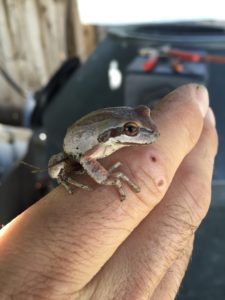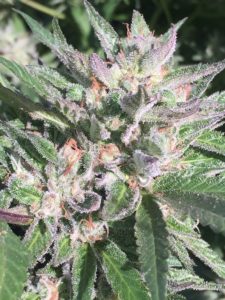Pesticides
Accounting to the obscurity regarding the lack of regulation and oversight for the entire modern history of this plant, pesticide testing on cannabis is only now seeing the light of day. The absence of official federal government rulings has left state regulators scrambling to standardize, monitor and enforce these guidelines on their own. This unfortunately has lead to unavoidable lack of oversight and widespread misuse of unapproved pesticides. Incredibly, the Cannabis Safety Institute has reported “that pesticide residue on retail Cannabis products is often found at levels exceeding the allowable levels on any agricultural product.” This lack of oversight has created an ever-increasing need to understand how long pesticides persist on the plants and what classes of pesticides are considered safe for use.

This newly evolving landscape of cannabis regulation poses a dynamic challenge for state regulatory agencies. Trying to match pesticide use on agricultural commodities for oral ingestion exposure is of little value and trying to apply the data on the loosely regulated tobacco studies also appears inappropriate. The Cannabis Horticultural Association (CHA) is making a sweeping recommendation that pyrolysis studies be run on all classes of pesticides on state approved lists for cannabis. This is probably the single most important step to be taken for quantifying the health risks for consumers and medical patients. It will also help quantify appropriate analytical thresholds regarding pesticide and fungicide screening. Pesticide inhalation is NOT HEALTHY and it should be the responsibility of each cultivator to assure the cleanliness of their product.
BioControls
Biological Controls or BioControls represent a class of biological based control against pests and pathogens. They represent using beneficial insects, fungi, bacteria and plant based chemicals to support the biology and chemistry of the substrate, plant itself and surrounding environment. Combined with cultural, mechanical and physical controls, they are THE INTEGRAL component for Integrated Pest Management (IPM) and way out of the chemical blitz of industrial pesticide use. While many are considered low risk and also generally recognized as safe, there are still plenty of precautions to use and combustion studies should be run as well.
Combustion Studies

While neem, potassium salts and mineral oil etc. may be safe and listed by the Organic Materials Review Institute (OMRI), there is no data on how they affect lung tissue upon inhalation. This applies for all pesticides including biopesticides. While biopesticides like spinosad, grandevo, Bt and others may be completely safe and approved on food crops for oral ingestion, there is no data regarding the safety of inhaling these microbial based controls. There is no data even explaining whether or not these microbial pesticides are destroyed during combustion or even how long they can live after being sprayed on flowering plants. The pesticide and microbial screening standards are incomplete models until these types of combustion studies are performed and verified. Generally speaking it is safe to assume that most organic and biological pesticides sprayed during vegetative growth will be completely safe but there is an unknown cutoff point for discontinuing spraying during flowering. It’s that cutoff point that needs to be thoroughly tested and analyzed as well.
In all seriousness, there should probably be 3 separate classifications of pesticide use for flowers, concentrates and edibles. Flowers harvested for concentrate production will have a much lower allowance for pesticide screening but perhaps a slightly higher allowance for microbial screening due to the fact the microbiology is typically destroyed during the extraction processes. Crops processed for strictly edibles could have a management program that sprays organic oils and biocontrols later into flowering, following a similar management platform of traditional OMRI standards. Standard flowers should have very low allowances for both pesticide and microbial residues.
Where Do We Go from Here?…
The landscape of cannabis horticulture has changed dramatically over the last decade. While myclobutanil leads the charge in getting a bad rap, there are plenty of other systemic pesticides such as, imidaclopridthiamethoxam, chlorpyrifos just to name a few. There should be no reason whatsoever a business should ever use toxic pesticides like abemectin, piperonyl-butoxide, bifenazate and other chemicals you have no idea how to pronounce. Ultimately cultivating clean cannabis is about “being one” with your growing environment. Monitoring and controlling environmental conditions goes a really long way in reducing the need to ever use pesticides.

Using the right management practices can mean the difference between your product being approved or destroyed. Pesticide management starts with a clean environment and ends with clean testing. Proper pesticide management can also put your business one step ahead of the greedy commercial competitors who will increasingly have to have their products destroyed from failed testing. Feeling good about providing an authentically uncontaminated product is a noble path that takes discipline and commitment. Big dollars will follow those who can provide equipment, information and consultation for cultivating clean, pesticide free cannabis. And you can put that in your pipe and smoke it.


